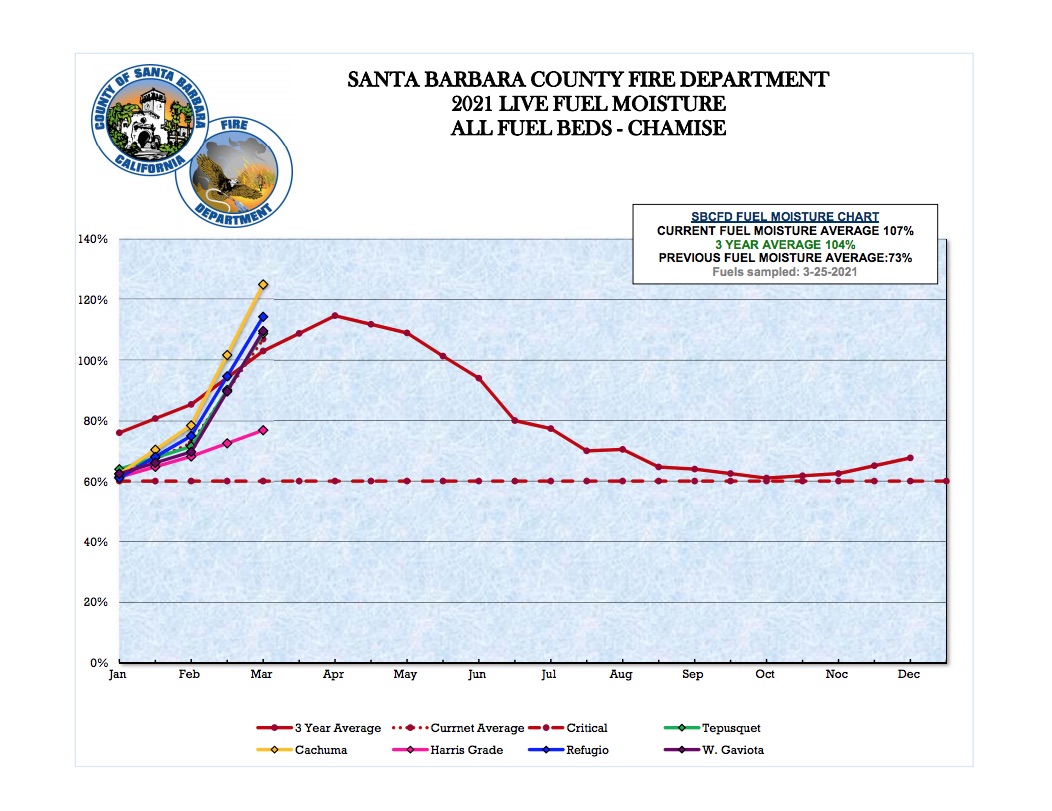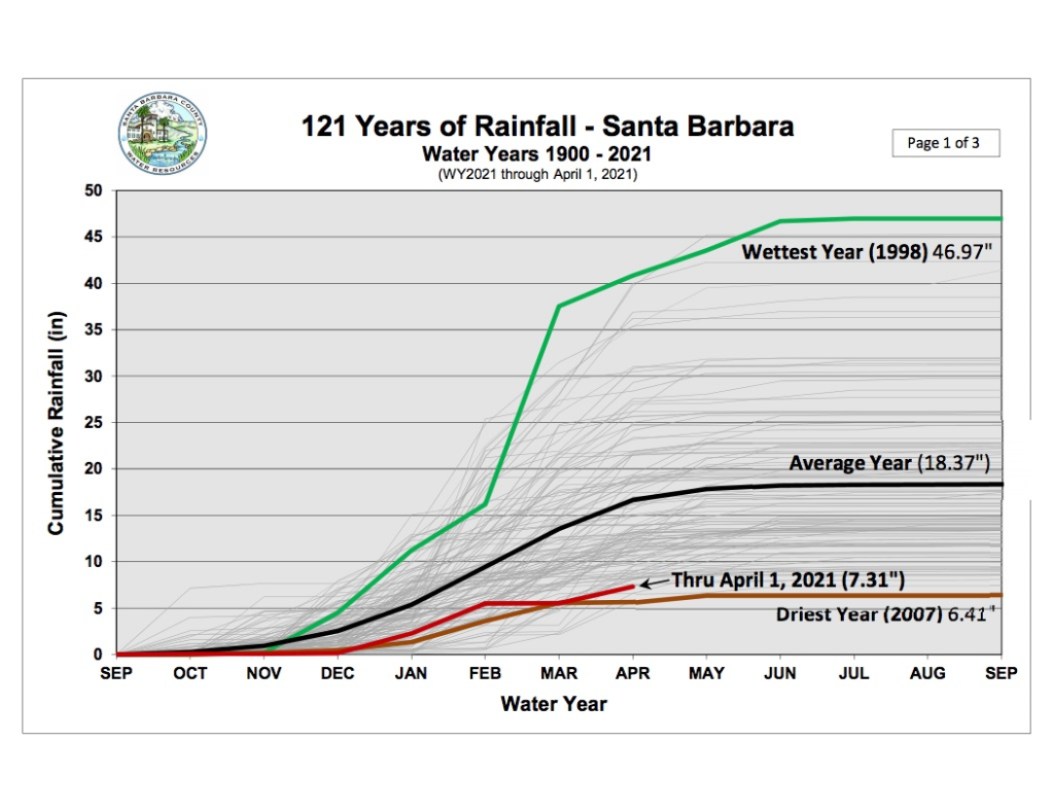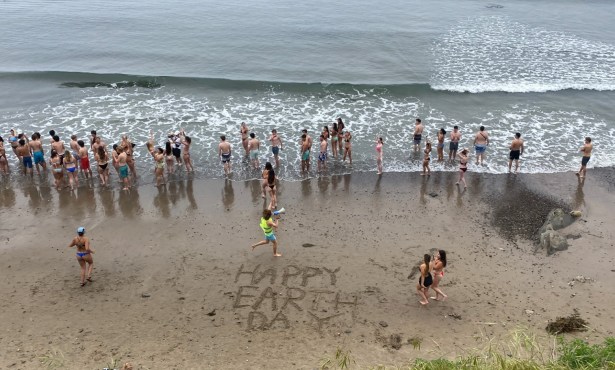A Very Dry Winter in Santa Barbara County
Short Rains Lead to Parched Grasses

Low-hanging fogs grizzling to the ground are likely all that Santa Barbara County’s hoped-for “April miracle” rains will produce as the grasses continue to dry into crunchiness and the year’s total rainfall is nine inches below normal. The critical fire indicator of fuel moisture level, which fire departments use to measure the flammability of the countryside, is not far off from levels from the past three-year average.
“It is important to remember we did not get a lot of rain this winter,” said County Fire spokesperson Captain Daniel Bertucelli, “but the cooler weather helps keep the grasses from drying out so quickly.” Less rain also means less grass growing, but drying winds serve to lay flammable conditions in the fuel bed. Recent fires have seen helicopters quickly deployed from their Santa Ynez Valley airbase, but the air support wasn’t so much due to dry vegetation, said Bertucelli. It was rather “another tool in the toolbox” in fighting wildland ignitions.
The fuel moisture level, which is measured monthly, sat above 100 percent in all areas of the county in March, with the exception of Lompoc’s Harris Grade. There, 77 percent of the chamise’s dry weight was water — completely dry vegetation would be zero percent — an increase from January’s 62 percent, which was perilously close to the 60 percent “critical” fuel moisture level. The water content normally peaks in April, but it might have peaked in March this year.
Average rainfall in the varied geography of Santa Barbara County ranges from 6 to 30 inches, but overall, it’s 53 percent less this water year. The nine short inches were measured at the official National Weather Service station at the airport in the Goleta Slough. “We do not expect much rainfall in the coming weeks,” acknowledged Eric Boldt with the National Weather Service. “This could be what we will have to live with until next winter.”
Boldt said above normal fire conditions were forecast for much of Southern California starting in July, and fire starts would depend on a number of things, such as heat waves and hot wind events like sundowners and Santa Anas. Lightning is a perennial concern. Hundreds of dry lightning strikes across Northern California caused a wildfire “siege” last August and September in which record-setting fires joined and contributed to more than 4 million acres burned, taking the lives of 31 people and dousing nearby areas in sooty smoke.
Santa Barbara County was spared large-scale blazes in 2020, but the potential for fire depends on whether the current drought continues, Boldt advised, and if the next rainy season is delayed again.

Support the Santa Barbara Independent through a long-term or a single contribution.




You must be logged in to post a comment.